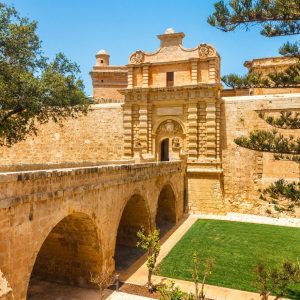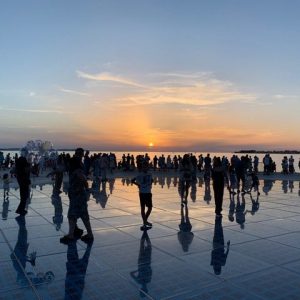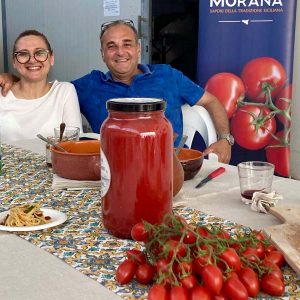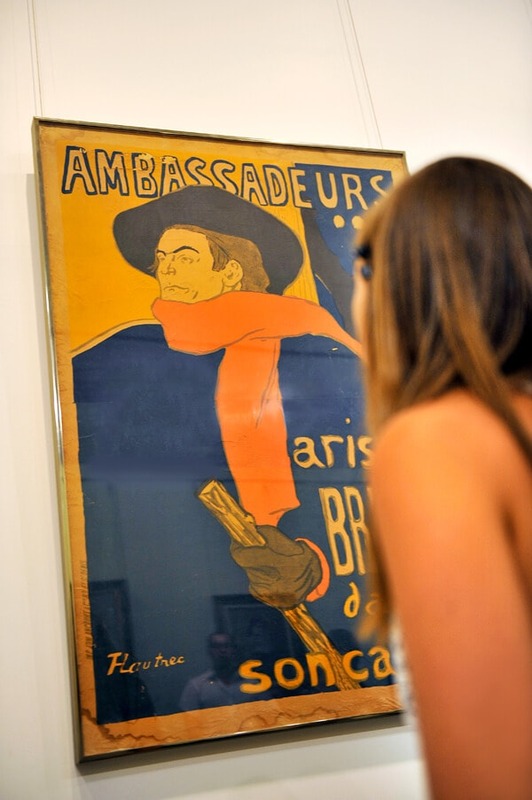 This October, the Grand Palais in Paris lays on its last major blockbuster exhibition before it closes in January 2020 for a much needed 3-year renovation. They have chosen the artist whose paintings sell for millions but who lived in poverty, Toulouse-Lautrec. The retrospective exhibition shows over 200 paintings from the Musée d’Orsay, the Musée de l’Orangerie, the Réunion des musées nationaux, the city of Albi and its Musée Toulouse Lautrec. It runs from 9 October to 27 January 2020.
This October, the Grand Palais in Paris lays on its last major blockbuster exhibition before it closes in January 2020 for a much needed 3-year renovation. They have chosen the artist whose paintings sell for millions but who lived in poverty, Toulouse-Lautrec. The retrospective exhibition shows over 200 paintings from the Musée d’Orsay, the Musée de l’Orangerie, the Réunion des musées nationaux, the city of Albi and its Musée Toulouse Lautrec. It runs from 9 October to 27 January 2020.
It’ll give you a new insight into the life and art of the aristocratic Henri Marie Raymond de Toulouse-Lautrec-Monfa (to give him his complete and very dignified name). But if you want to discover more about his life outside Paris, then visit the glorious city of Albi in the southern department of the Tarn.
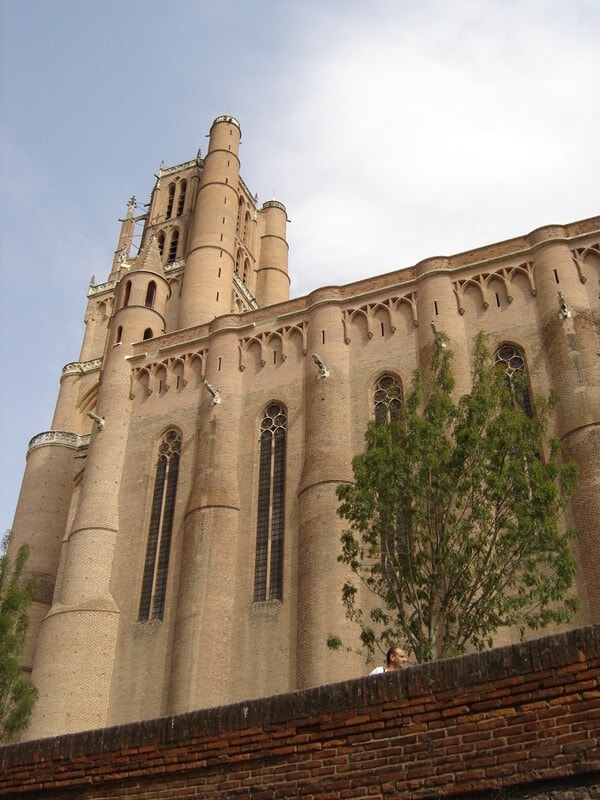 Albi’s medieval city centre is a UNESCO World Heritage Site. It’s small and compact, known as the ‘red city’ from the extraordinary red brick buildings that fill the streets and squares. Easily walkable, you can spend the morning at the museum then stroll across the bridge that spans the river Tarn. It gives you a different, intriguing view of Albi, and more to the point at this stage of the day, there’s a good lunch to be enjoyed at Le Pont du Tarn restaurant.
Albi’s medieval city centre is a UNESCO World Heritage Site. It’s small and compact, known as the ‘red city’ from the extraordinary red brick buildings that fill the streets and squares. Easily walkable, you can spend the morning at the museum then stroll across the bridge that spans the river Tarn. It gives you a different, intriguing view of Albi, and more to the point at this stage of the day, there’s a good lunch to be enjoyed at Le Pont du Tarn restaurant.
Henri de Toulouse-Lautrec was born in 1864 in Albi to an aristocratic family who were descended from the mighty Counts of Toulouse. He lived in Albi as a child and young boy before going to Paris, returning to the nearby family châteaux whenever he could.
So make Albi the starting point for a fascinating trip in the footsteps of Toulouse-Lautrec.
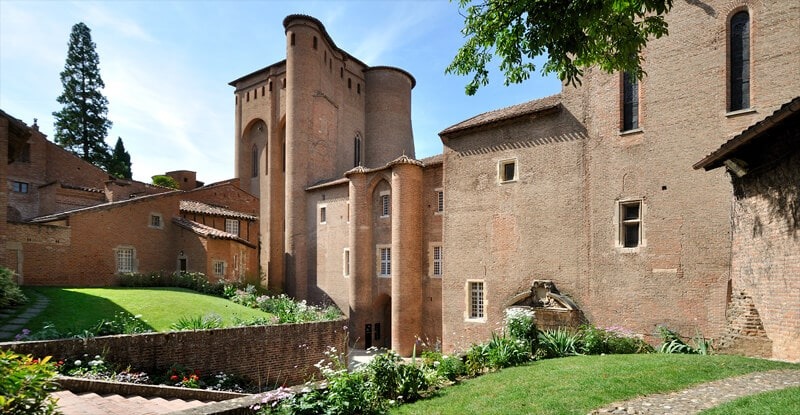 Every exploration of the artist’s life must begin at the former home of the bishops, the Palais de la Berbie in the Episcopal City.
Every exploration of the artist’s life must begin at the former home of the bishops, the Palais de la Berbie in the Episcopal City.
The Bishop’s Palace re-opened after a massive renovation in 2012 and now houses the largest collection of works by Toulouse-Lautrec in the world. It takes you through his extraordinary life, showing works that are a revelation to those brought up almost exclusively on the exuberant posters of the characters of 19th-century Paris life.
There are early portraits of friends and family and dogs, and paintings of horses and riders – a skill he learnt when a young boy in Paris from his tutor, René Princeteau, a friend of his father. Then you step into a more familiar world of bars where top-hatted men entertain prostitutes, young girls kiss in bed, exhausted dancers relax, a young girl gently pulls up her stocking, and naked women stand or sit in poses that capture rare moments of casual intimacy.
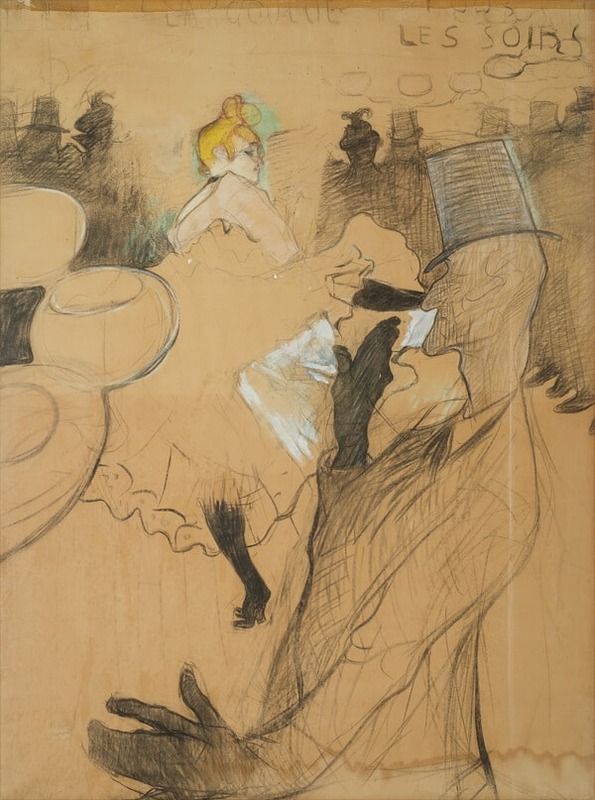 The public posters he created depict the Moulin Rouge, Le Chat Noir and other Parisian nightclubs. They bring to life the performers who all became friends, as well as the artistic subjects, of Toulouse-Lautrec. Preliminary sketches are displayed alongside the printed posters of the French cancan star La Goulue (‘the Glutton’); Yvette Guilbert, the French cabaret singer; Jane Avril, the dancer with an extraordinary jerky style, and the flamboyant Aristide Bruant, the performer who always dressed in a black cape and red scarf.
The public posters he created depict the Moulin Rouge, Le Chat Noir and other Parisian nightclubs. They bring to life the performers who all became friends, as well as the artistic subjects, of Toulouse-Lautrec. Preliminary sketches are displayed alongside the printed posters of the French cancan star La Goulue (‘the Glutton’); Yvette Guilbert, the French cabaret singer; Jane Avril, the dancer with an extraordinary jerky style, and the flamboyant Aristide Bruant, the performer who always dressed in a black cape and red scarf.
For years Toulouse-Lautrec lived in Montmartre, known for its bohemian inhabitants. He joined the mix of artists, intellectuals, comedy performers, dancers, singers and prostitutes, all of whom he captured in charcoal, watercolour and paint. He lived a pretty dissolute life, drinking too much and frequenting prostitutes, and he inevitably contracted syphilis. He was a popular figure, someone who lived life to the full, faithful to his friends, and apparently a great cook.
He died in 1901 at the age of 36 at his mother’s Château de Malrome in the Gironde near Bordeaux. 4 years later, his friend and art dealer, Maurice Joyant suggested to the Albi authorities that they take the painting as the basis for a new museum.
More traces of the artist
You can’t get into the Hôtel du Bosc where he was born (in the rue Lautrec of course). But you can eat at Le Lautrec restaurant which is housed in the former stables directly opposite the Lautrec mansion.
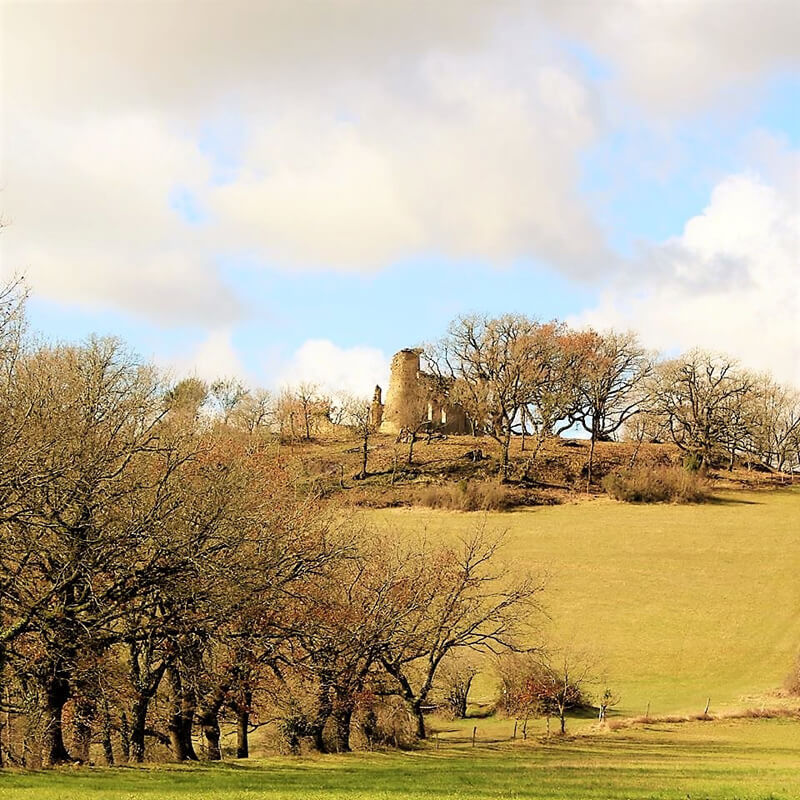 Drive 32kms due south and you’ll come across the Château de Montfa, commanding the heights and once a formidable place to capture. Once owned by Toulouse-Lautrec’s father’s family, today it’s a beautiful ruin with stunning views over the surrounding countryside. Walk up the hill to where a team of enthusiastic volunteers are excavating and repairing the ruined walls and gateways of the original 13th century château.
Drive 32kms due south and you’ll come across the Château de Montfa, commanding the heights and once a formidable place to capture. Once owned by Toulouse-Lautrec’s father’s family, today it’s a beautiful ruin with stunning views over the surrounding countryside. Walk up the hill to where a team of enthusiastic volunteers are excavating and repairing the ruined walls and gateways of the original 13th century château.
For an even more nebulous connection, but well worth the visit, is the village of Lautrec, just 10kms due west which belonged at one time to the Lautrec estates. It’s easy to see why this is one of France’s Most Beautiful Villages, with its winding cobbled streets, medieval square and 17th-century windmill. Should you need a further reason to visit, there are some excellent small shops selling the blue textiles and clothes made famous by the local indigo dye industry. And this being France, naturally there’s a great restaurant for lunch, Le Jardin du Clocher in La rue de la Rode near the main square. Sit in the small garden and dine off traditional dishes that Toulouse-Lautrec would surely have approved of.
Two other châteaux remain on a Lautrec tour
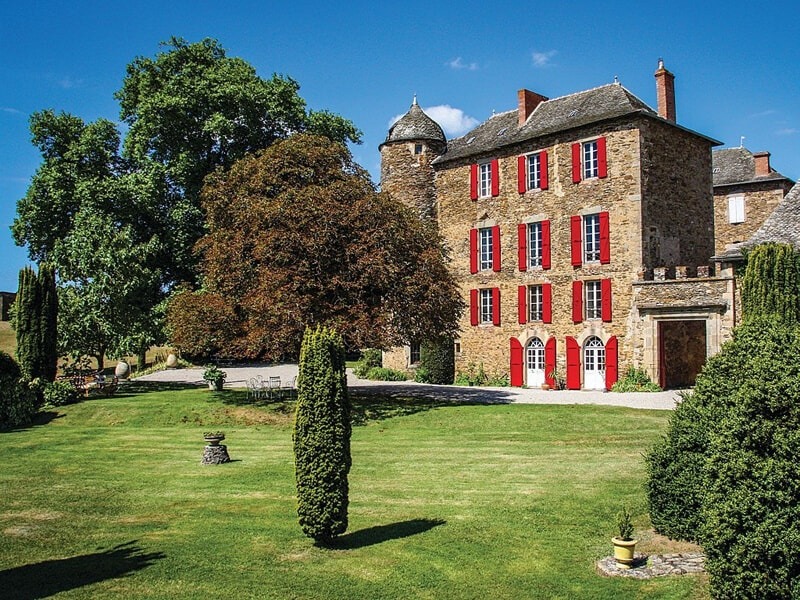 Northwest of Albi, the Château du Bosc at Camjac in the Aveyron was where the young Lautrec enjoyed early family holidays with his cousins. His father spent most of his time hunting; his beloved mother, Adèle Tapié de Céleyran, Countess of Toulouse-Lautrec, stayed with the children. And it’s here where you get closest to the young painter. A guide takes you through a series of rooms from library to dining room to bedrooms that are full of household objects. There are childhood toys, handwritten letters, sketches by Lautrec in notebooks, his witty cartoons on the walls of the Orangery. Most poignantly, pencil marks on the walls made each year show how small Lautrec was compared to his cousins.
Northwest of Albi, the Château du Bosc at Camjac in the Aveyron was where the young Lautrec enjoyed early family holidays with his cousins. His father spent most of his time hunting; his beloved mother, Adèle Tapié de Céleyran, Countess of Toulouse-Lautrec, stayed with the children. And it’s here where you get closest to the young painter. A guide takes you through a series of rooms from library to dining room to bedrooms that are full of household objects. There are childhood toys, handwritten letters, sketches by Lautrec in notebooks, his witty cartoons on the walls of the Orangery. Most poignantly, pencil marks on the walls made each year show how small Lautrec was compared to his cousins.
The château is still in the Lautrec family. Had the painter lived, it would have been his but his
father bequeathed it to his mother’s family who continue to live here.
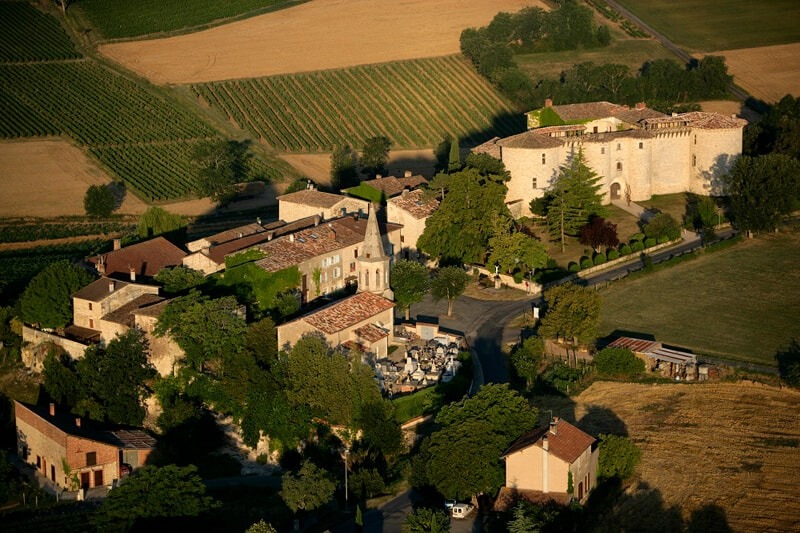 The Château de Mauriac was another of the properties associated with the family. Today it’s just a 30-minute drive west of Albi; in the past, it would have taken about 2 hours. The artist Bernard Bistes bought the castle years ago and has been restoring it ever since. Its formidable façade has been largely rebuilt but there are still plans to top off the towers at the front. Enter through the massive wooden door and you’re met by Emmanuel Bistes, the son who runs the château as an attraction to visit, as an art gallery for his father’s paintings, and as a bed and breakfast.
The Château de Mauriac was another of the properties associated with the family. Today it’s just a 30-minute drive west of Albi; in the past, it would have taken about 2 hours. The artist Bernard Bistes bought the castle years ago and has been restoring it ever since. Its formidable façade has been largely rebuilt but there are still plans to top off the towers at the front. Enter through the massive wooden door and you’re met by Emmanuel Bistes, the son who runs the château as an attraction to visit, as an art gallery for his father’s paintings, and as a bed and breakfast.
You can stay overnight in the château imagining the young painter playing here as a boy. Whether he slept in your room or not is up to you and your imagination.
More information
EasyJet offers direct flights between London Gatwick and Toulouse up to 3 times a day during the summer months.

